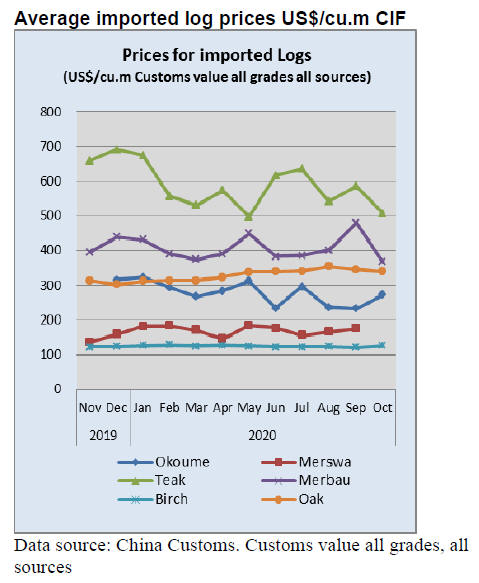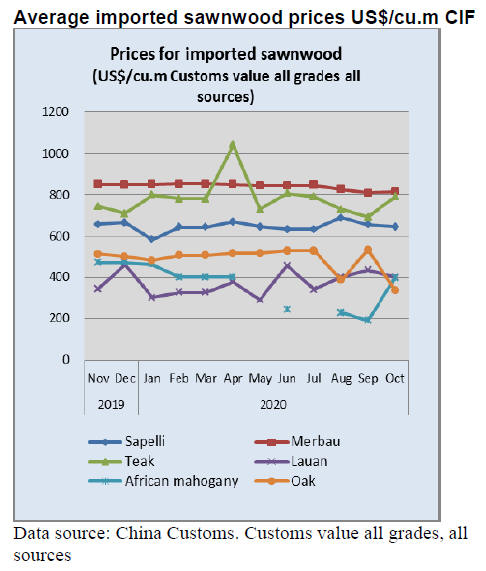US Dollar Exchange Rates of
25th January
2021
China Yuan 6.4798
Report from China
Household income and consumption rose in 2020
A press release from China¡¯s National Bureau of Statistics
says in 2020 per capita disposable income reached
RMB32,189 a nominal increase of 4.7% over the previous
year and a real increase of 2.1% after deducting price
factors. The per capita disposable income of urban
residents was RMB43,834 an increase of 3.5%.

See:
http://www.stats.gov.cn/english/PressRelease/202101/t20210119_1812523.html
2020 real estate development
Details of national real estate development in 2020 have
been published by the National Bureau of Statistic.
Overall, 2020 investment in real estate development
increased 7% over the previous year while investment in
residential properties expanded 6.3% compared to 2019.
See:
http://www.stats.gov.cn/english/PressRelease/202101/t20210119_1812512.html

China¡¯s GDP exceeds RMB100 trillion
According to the National Bureau of Statistics the value of
China's gross domestic product rose 2.3% to RMB101.6
trillion year on year in 2020 exceeding RMB100 trillion
for the first time. That makes China the only major
economy to post growth in 2020.
The proportion of China¡¯s GDP to the world economy
grew to 17% in 2020 from 16.3% in 2019. The total value
of import and export goods rose 1.9% year on year to
RMB32.16 trillion in 2020.
Wood processing enterprises on holiday
At present, production in factories in Shandong, Jiangsu,
Guangdong and Fujian has been suspended. In order to
stagger the flow of people travelling workers have
returned to their hometown for the holidays ahead of
schedule.
The recent intensely cold weather has challenged the
power system all over the country. Some factories
experienced power failures and in order to manage the
power supply the authorities have required factories with
non-continuous production lines to close early for the
holidays.
The trade press in China has suggested around 30% of the
wood processing enterprises have been affected and in
some areas only 10% of factories are operating. For
example, the local media says wood processing factories
in Guigang City, Guangxi Zhuang Autonomous Region
shut down from 15 January.
Container shortage impacting timber imports
The availability of shipping containers and disruptions to
shipping schedules is impacting the flow of wood product
imports. The shortage of shipping containers in places
where they are needed has pushed up international
shipping costs. Imports are disrupted and producer
countries are facing a challenge to get timber shipments
away.
At present, Chinese timber traders purchasing European
spruce and American southern pine have a lot of new
orders but delivery schedules are difficult to determine.
In related news, the urgency to secure log supplies has
driven up prices in the domestic market. The trade press in
China says timber prices in Chongqing, Jiangxi and
Guangxi Provinces have been raised.
Cross-border e-commerce - a new feature of wooden
handicraft trade
Cao County is known for wooden handicraft production
and export sales with nearly 200 wooden handicraft
enterprises and workshops. At the beginning of 2020
exports from these handicraft enterprises was affected by
the pandemic which spurred an initiative on cross-border
e-commerce, business is booming and creating a beautiful
scenery.
According to the media in 2020, there were 116 crossborder
e-commerce traders with 1,100 employees and
sales RMB670 million. By way of example, YuGuang
Handicrafts Co., Ltd. in Cao County registered 10 stores
with Amazon and achieved daily sales of about
US$10,000 per store in early 2020. For 2020 the
company's sales exceeded RMB 200 million.
In order to serve the e-commerce traders training courses
have been held in Cao County involving Amazon
professionals.
China's first fully automated plywood mill comes online
On 8 January China's first fully automated plywood
production line built for Guangxi Forest Industry Group
began operation in Baise City, Guangxi Zhuang
Autonomous Region. Construction of the project started
in April 2020 and trial production had been completed by
December 2020.
The total investment was RMB250 million and the site
covers an area of nearly 9 hectares. The mill can produce
100,000 cubic metres of plywood annually.
This investment could lead the way to changing the
plywood production sector from small dispersed, laborintensive
traditional plywood manufacturing and could be
significant for the plywood supply chain.
News from the GGSC -
An initiative of the Chinese private sector on building a
global green supply chain for forest products
In December 2020, despite the pandemic, domestic market
demand in China rose steadily and production and
operations of manufacturers were largely uninterrupted.
The purchasing manager index (PMI) for China's
manufacturing industry in December was 51.9%, slightly
lower than that of the previous month. The PMI has been
around 51 for six consecutive months.
The momentum for economic recovery is steady. In
December wood production and manufacturing output
expanded as domestic demand continued to recover.
However, prices for raw materials rose and the inventory
of raw materials declined and exports remained weak.
The GGSC-CN¡¯s comprehensive index for December
registered 52.0 (55.6 for last December and 55.2 for
December 2018) indicating the December operations of
the forest products enterprises represented in GGSCCN
index (major large enterprises) expanded from the
previous month. See the figure below.

Enterprises continue to face many challenges, the
main
being the impact of the global pandemic and the need to
meet new domestic environmental requirements.
Details of specific components included in deriving the
GGSC index and challenges for the Chinese timber
industries in December can be found on the GGSC website
at: http://www.itto-ggsc.org/


|